Reincarnation Before Mushoku Tensei
06 June, 2022
This post contains heavy spoilers because character death is implicit in the concept of reincarnation. Reader discretion is advised.
Although many people (including myself, at times... oops) have ascribed the origins of the isekai tensei subgenre to the 2012 web novel Mushoku Tensei, this is a simplification. Mushoku Tensei definitely created a formula that’s been emulated to such a degree that it’s been conflated with isekai itself, which continues to inspire popular series with only mild variation a full decade later, the main innovation coming only a few months later with the Tensei Shitara Slime Datta Ken web novel choosing a slime over another human for the protagonist’s new body. A quick look at the current season shows Honzuki no Gekokujou and Gaikotsu Kishi-sama, Tadaima Isekai e Odekakechuu as very much in this vein.
But the concept of being reincarnated in another world likely originates in one religious text or another – I confess I don’t have sufficient knowledge of Jainism, Hinduism and Buddhism to pinpoint the precise origin. These related faiths describe a variety of realms, some better than the present world, some worse, and the possibility of reincarnation therein – although the goal was generally to escape this cycle through some kind of liberation or enlightenment.
Buddhism, of course, was the state religion of Japan until the Meiji Restoration, and remains a dominant element of that country’s religious fabric. And reincarnation has been appearing in isekai anime and manga long before the current wave solidified the formula.
-
The Digimon franchise originates in a series of virtual pets, and when one died (as their lifespans are limited, and could be shortened by poor care) the player would simply raise a new one. The PlayStation game Digimon World added a sort of reincarnation element, so as to not knock the player back too far in terms of gameplay when their digimon partner died; techniques and a percentage of stats at death would carry over to the newborn digimon.
Digimon Adventure was inspired by (among many other things) Digimon World, from which it takes both the setting for its first story arc and its handling of reincarnation. Angemon, the partner digimon of Takaishi Takeru (a member of the main cast) uses up all his energy in a self-sacrificial attack, and the dying digimon’s feathers merge into a digimon egg. The egg hatches into Poyomon at the beginning of the next episode, but takes a full twenty to evolve up into Angemon again.
_[6527A38B].mkv_snapshot_19.34.836.jpg)
_[6527A38B].mkv_snapshot_19.41.274.jpg)
(Incidentally, this is very much not what would happen in a typical Digimon World playthrough; much of the appeal of reincarnation therein is the ability to raise a wide variety of digimon forms.)
We are told in the narrative that other digimon reincarnate as well, but do not see them except when the digimon in question has a human partner, as is the case with Wormmon in Digimon Adventure 02. More typical with regard to a digimon’s death is for its body to simply disintegrate into data, with no egg appearing.
_[E2F8E6E3].mkv_snapshot_18.51.699.jpg)
Digimon believe their body is taken to the Village of Beginnings upon death, but this is not observed. In Digimon Adventure the Dark Masters, the villains of the story arc, have actually wrecked the village itself, while Digimon Adventure 02 only depicts three deaths in the digital world. One is of a partner digimon who we witness being reborn, while the other two are of characters who no one would be in any hurry to revive.
_[E2F8E6E3].mkv_snapshot_19.27.413.jpg)
Furthermore, not a single reincarnated non-partner digimon appears in Digimon Adventure 02, despite the fact that it takes place three years after Digimon Adventure; even the idea of reincarnation (excepting among digimon partners, who are special in a variety of ways) could be arguably likened to a religious belief. Alternatively, the sheer level of destruction was so great that none were reborn in a full three years, despite the accelerated life-cycles generally associated with the digimon – although a reborn Leomon does make an appearance in the 2nd part of the long-awaited sequel Digimon Adventure tri.
_[68187049].mkv_snapshot_08.21.101.jpg)
Regardless, many fans felt that Digimon Adventure’s attitude towards reincarnation did not give the series high enough stakes, and the Digimon franchise moved away from the concept in its future installments.
-
In Fushigi Yuugi, reincarnation serves primarily as a way to get around the inevitable parting that happens in older isekai when the protagonist goes home. Sukinami Taka is the reincarnation of Tamahome, the series’ main love interest, and could almost be mistaken for a reverse of the typical isekai tensei protagonist were he introduced at the very end of the story.
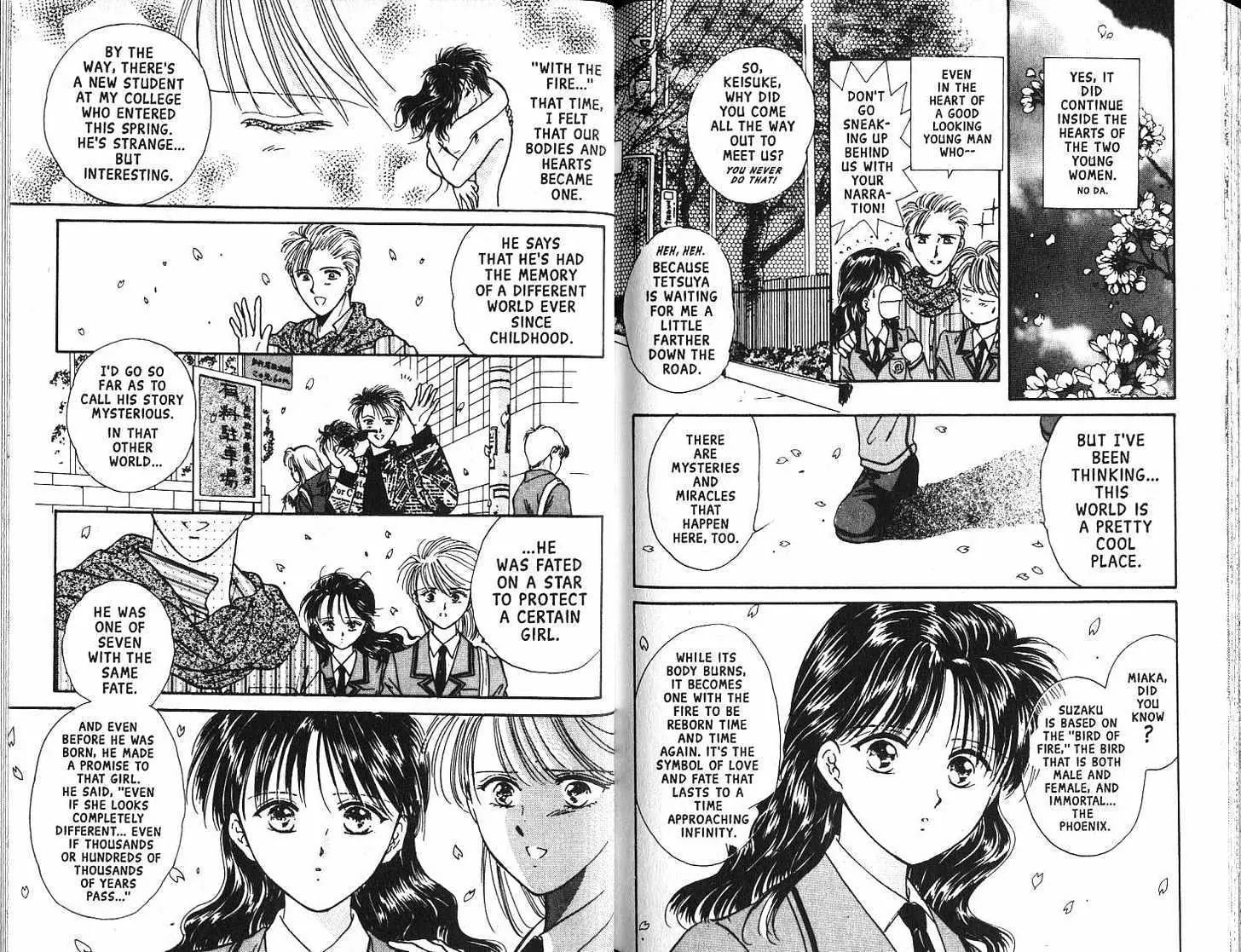
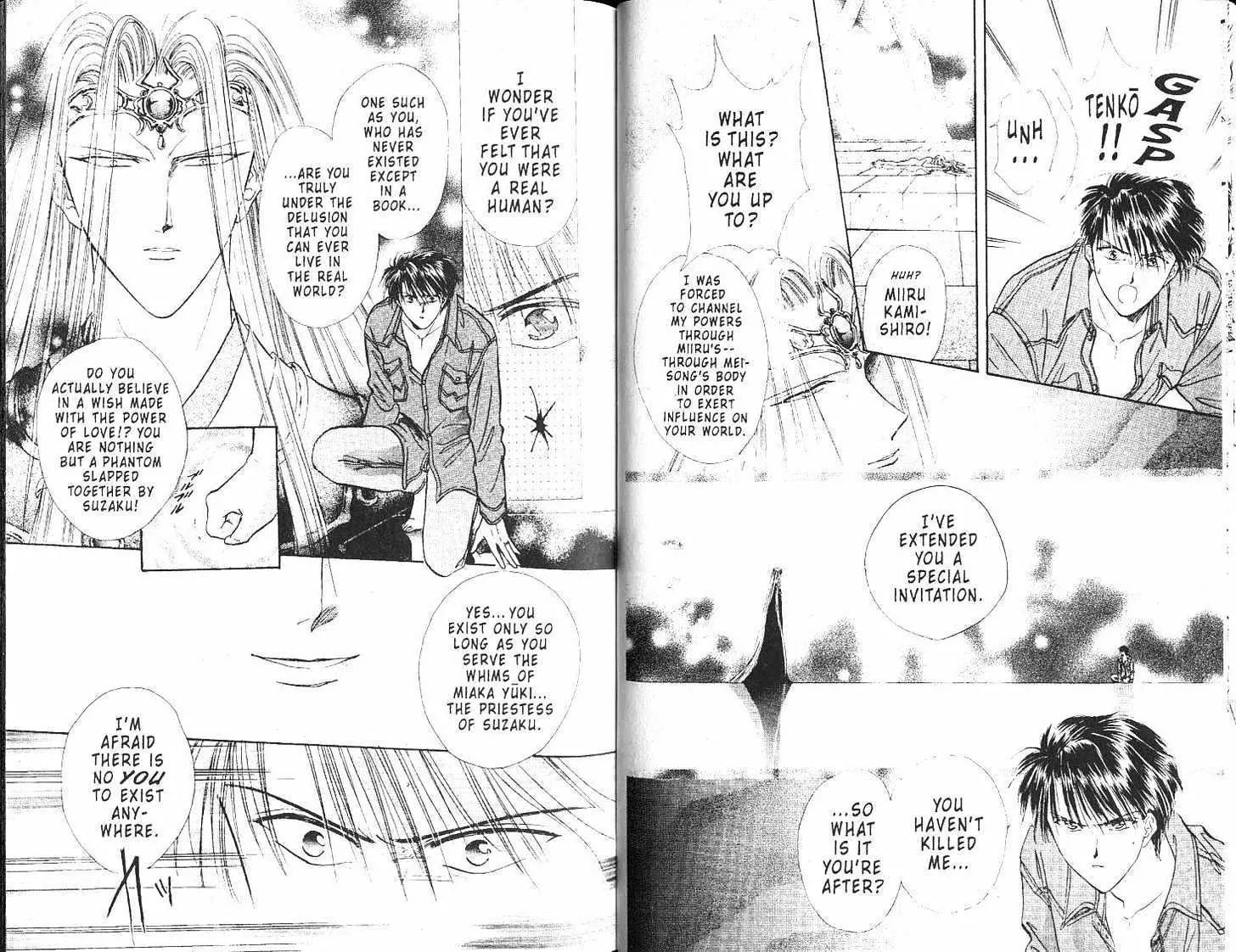
Part 2 shows Miaka and Taka dating back on Earth, but many of his memories are missing or hazy, as is often the case with real accounts from those who claim to have been reincarnated. Unlike in said accounts, however, said memories can be regained by obtaining a series of stones from the other world, and the search for them occupies the remainder of the manga.
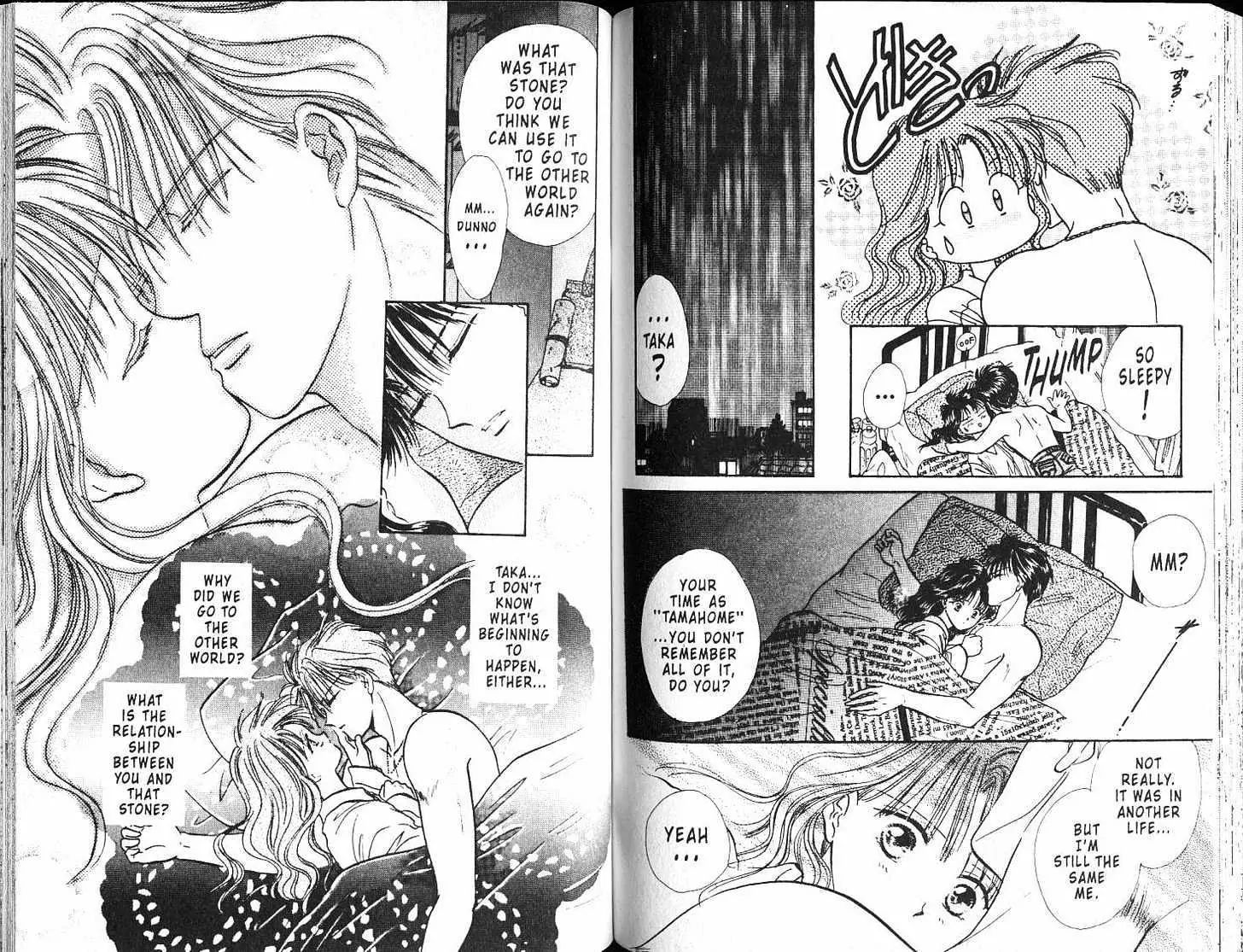
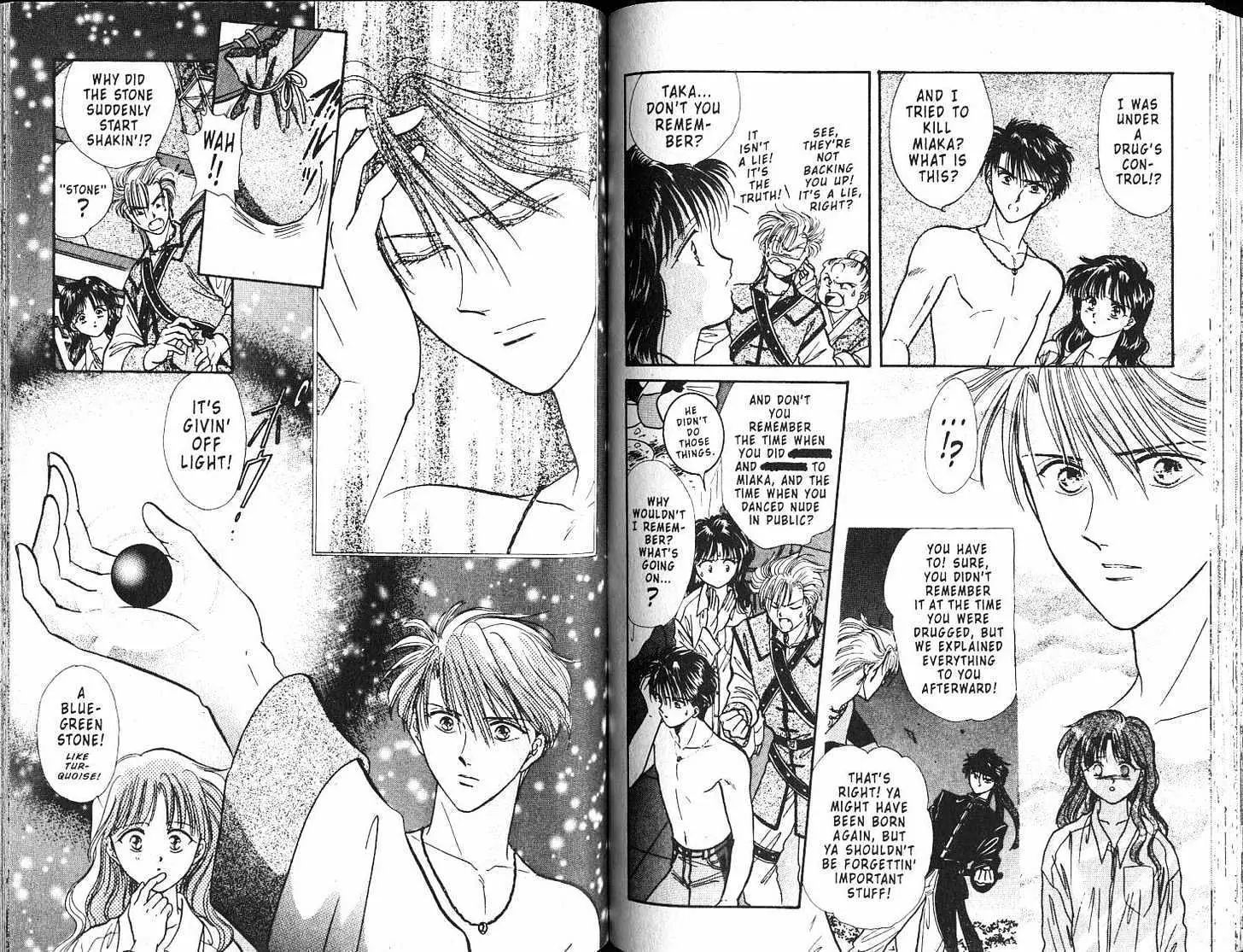
A reincarnated self is not quite identical to one’s past, and this fact underlies much of the conflict of this story arc. Taka is described as a phantom, and the antagonist reanimates the original Tamahome; the two eventually have a climactic final battle, complete with a love triangle involving only two souls.
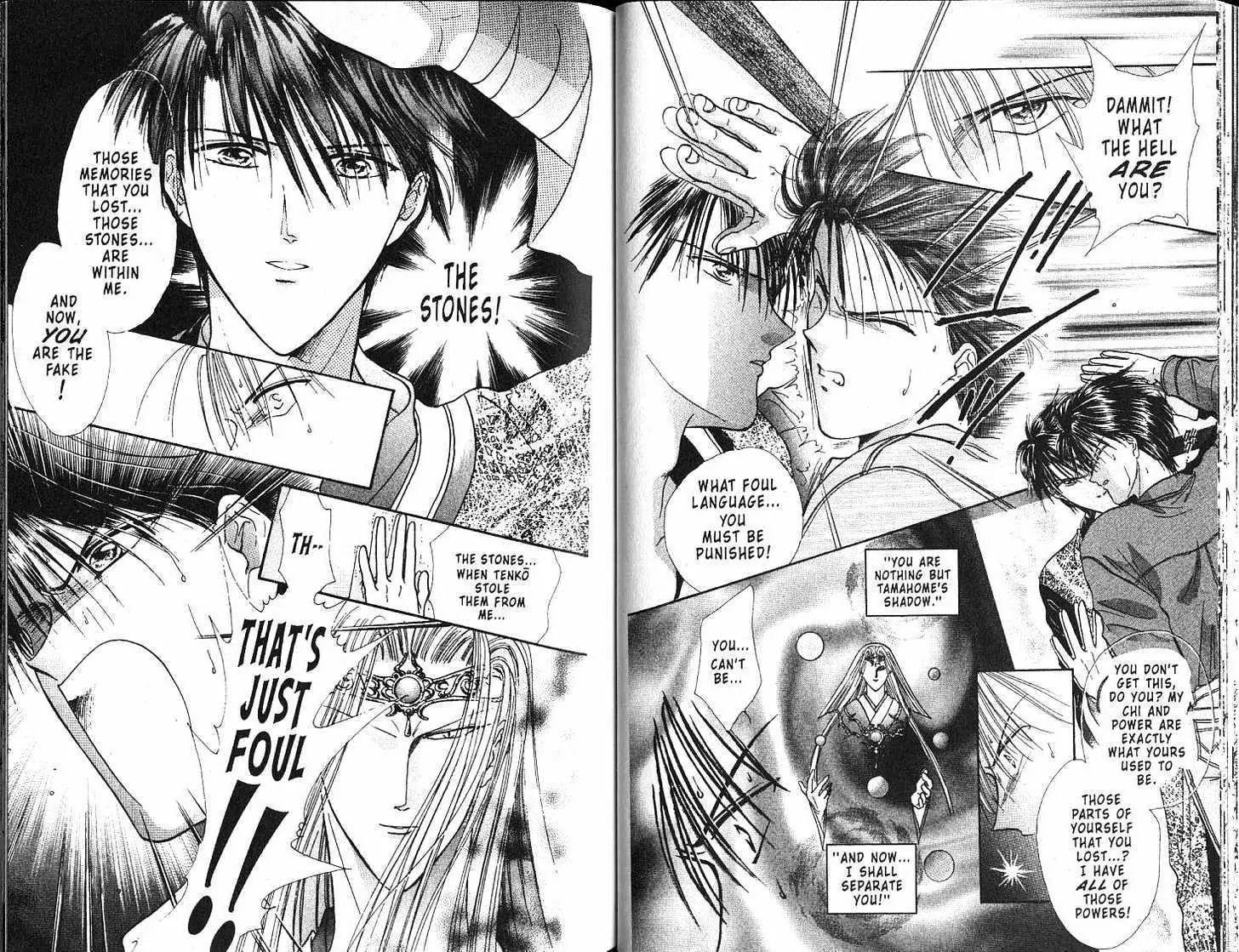
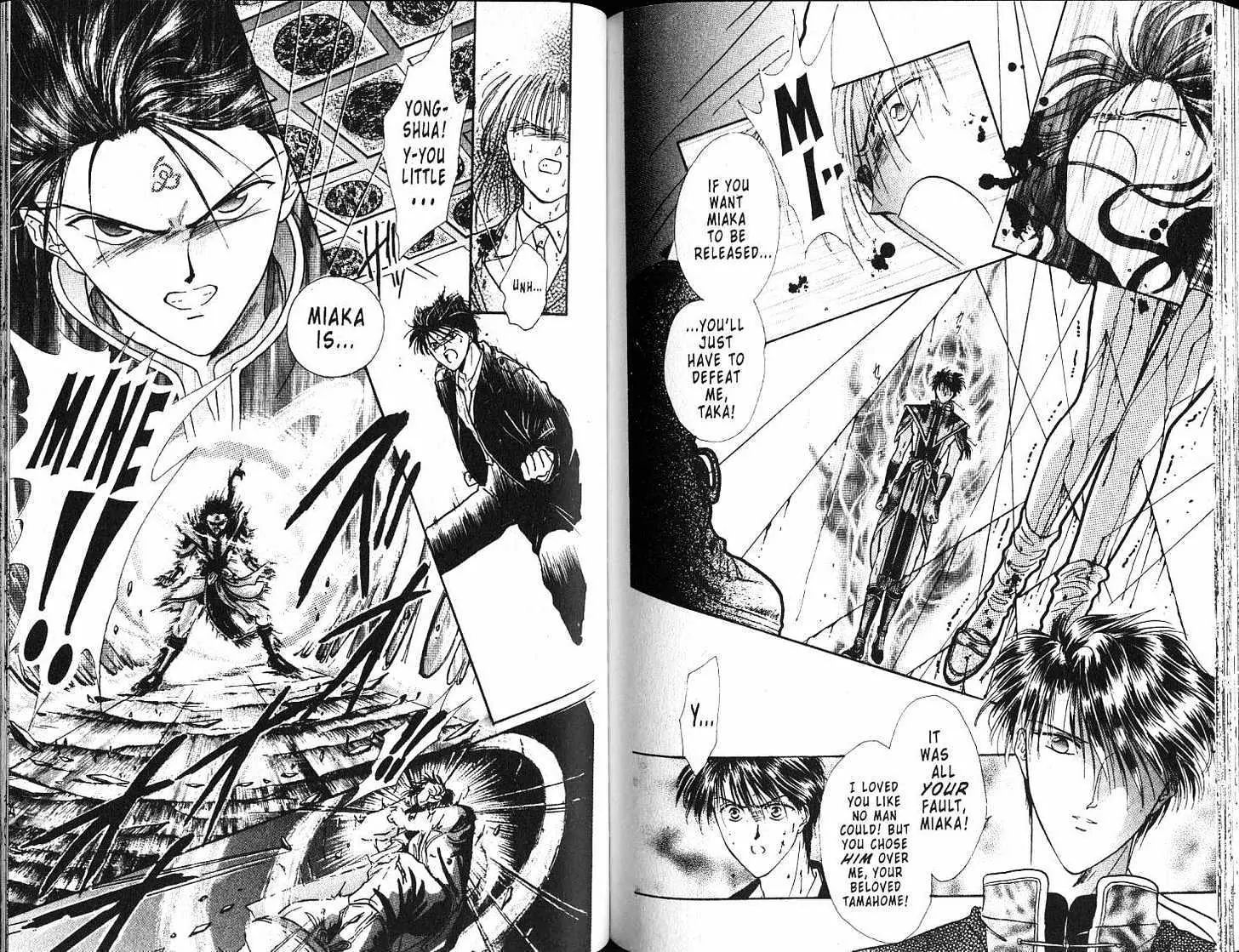 The theme of a love triangle involving one’s past life and one’s reincarnated self is developed more fully in InuYasha, whose protagonist, Higurashi Kagome, is the reincarnation of the miko Kikyou. (InuYasha, admittedly, could fairly be described as a time travel story and not an isekai; the other side of the well takes Kagome to the Sengoku period, complete with Oda Nobunaga alive and in charge of Owari province. However, said time period is full of youkai, and history doesn’t seem to change on her frequent back-and-forth journeys.)
The theme of a love triangle involving one’s past life and one’s reincarnated self is developed more fully in InuYasha, whose protagonist, Higurashi Kagome, is the reincarnation of the miko Kikyou. (InuYasha, admittedly, could fairly be described as a time travel story and not an isekai; the other side of the well takes Kagome to the Sengoku period, complete with Oda Nobunaga alive and in charge of Owari province. However, said time period is full of youkai, and history doesn’t seem to change on her frequent back-and-forth journeys.)
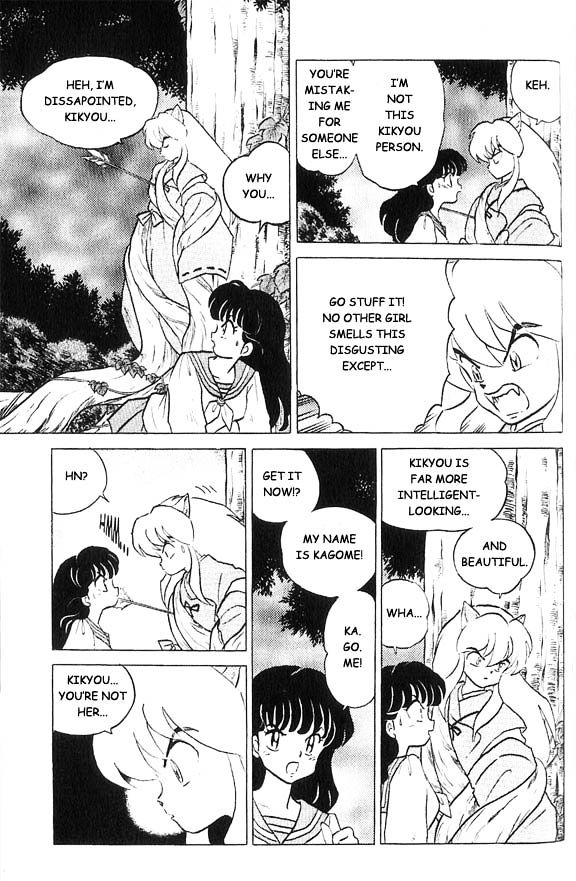
Kikyou herself is revived later in the story, and the title character, who loved the former (but got sealed to a tree for his troubles) and travels with Kagome, has no easy time sorting out his feelings; the fact that he was written by the tsundere master Takahashi Rumiko plays no small part in his confusion.
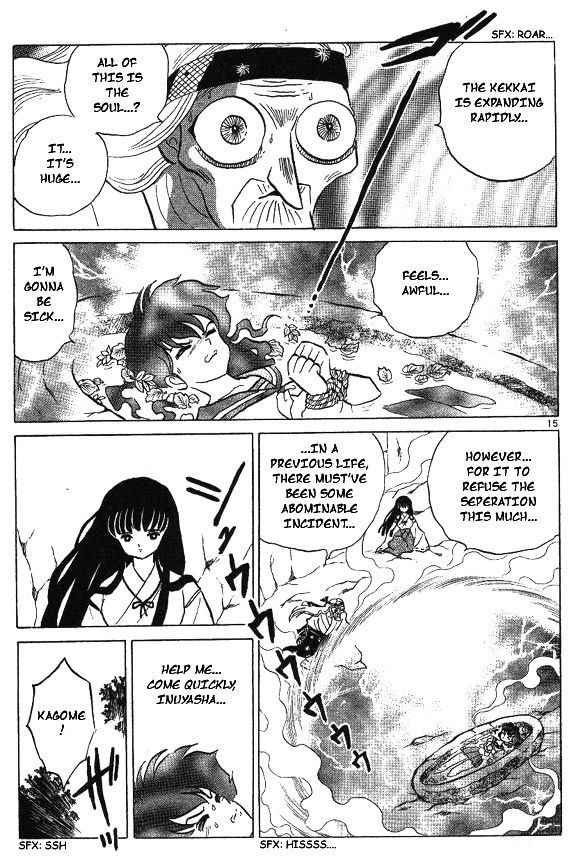
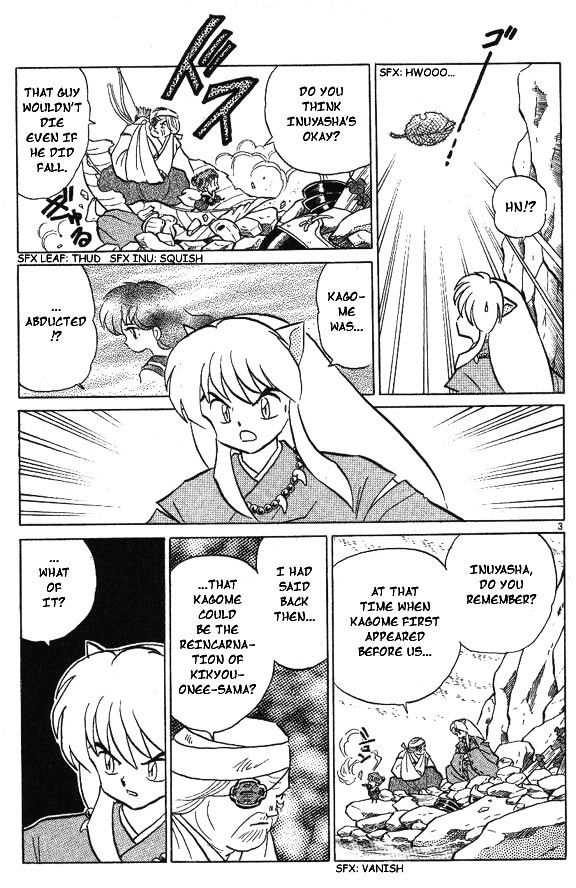
The legacy of an apparent mutual betrayal clashes with a reincarnation determined to carve out her own independent role in this world, who rejects any identification with the rival of her past life.
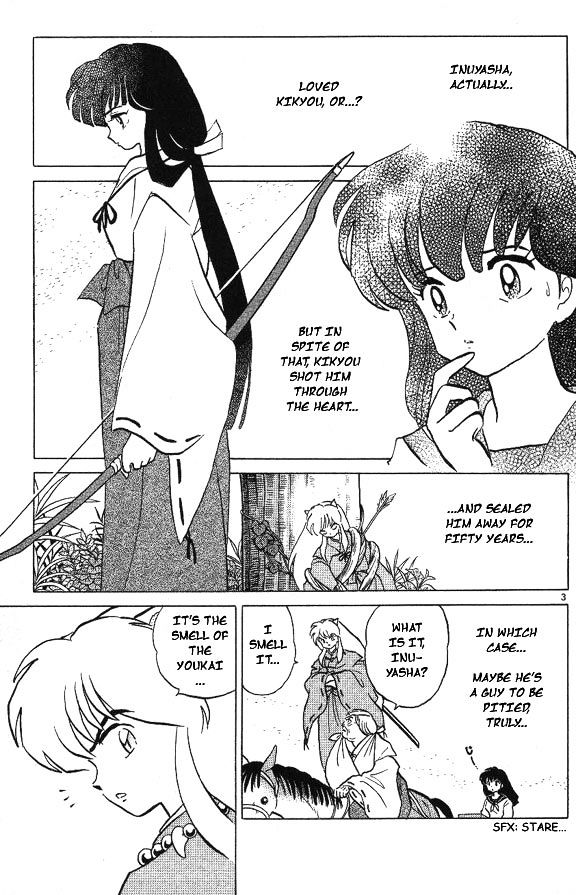
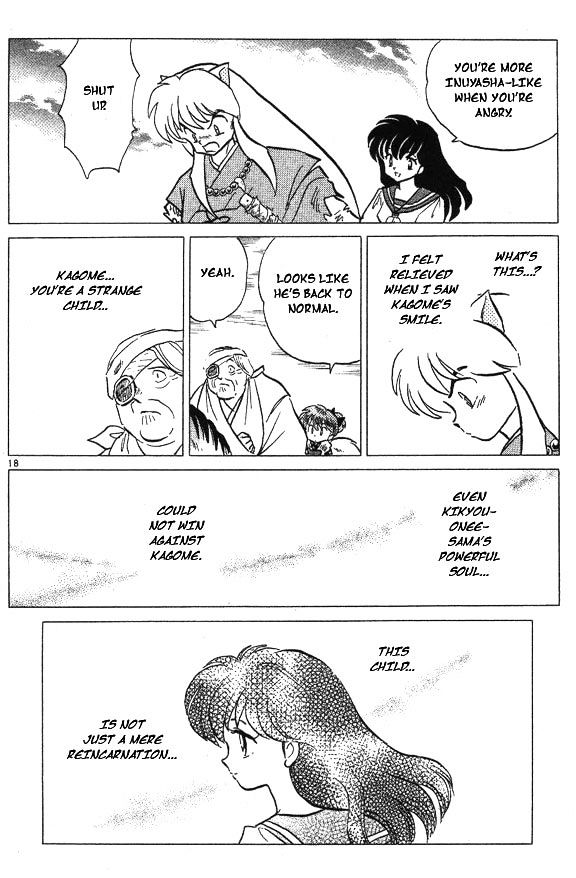
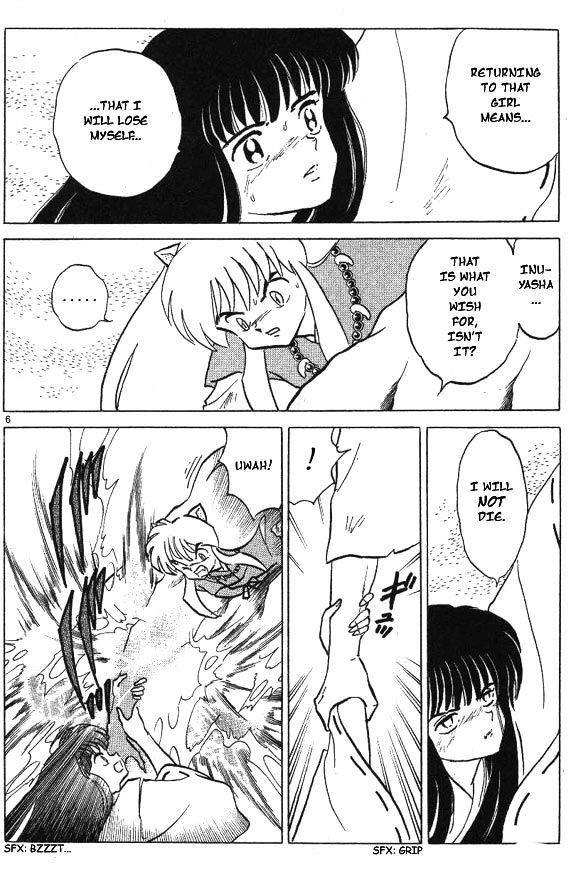 -
Boku no Chikyuu wo Mamotte is only ‘isekai tensei’ in the absolute loosest sense of the word, and a reverse one at that: the other world in question is not a parallel realm, but Earth’s own moon. But no discussion of reincarnation in older anime and manga would be complete without at least a mention of this legendary title.
-
Boku no Chikyuu wo Mamotte is only ‘isekai tensei’ in the absolute loosest sense of the word, and a reverse one at that: the other world in question is not a parallel realm, but Earth’s own moon. But no discussion of reincarnation in older anime and manga would be complete without at least a mention of this legendary title.
The characters are linked to their past lives by a series of strange dreams, and need not be the same gender as their past selves; Enju and Issei predate Youjo Senki’s Tanya (and a number of less famous manga characters) by decades.
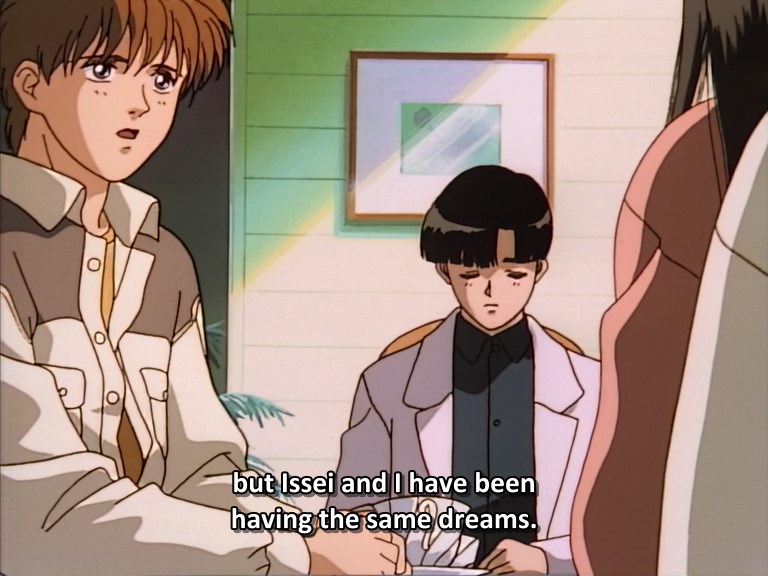
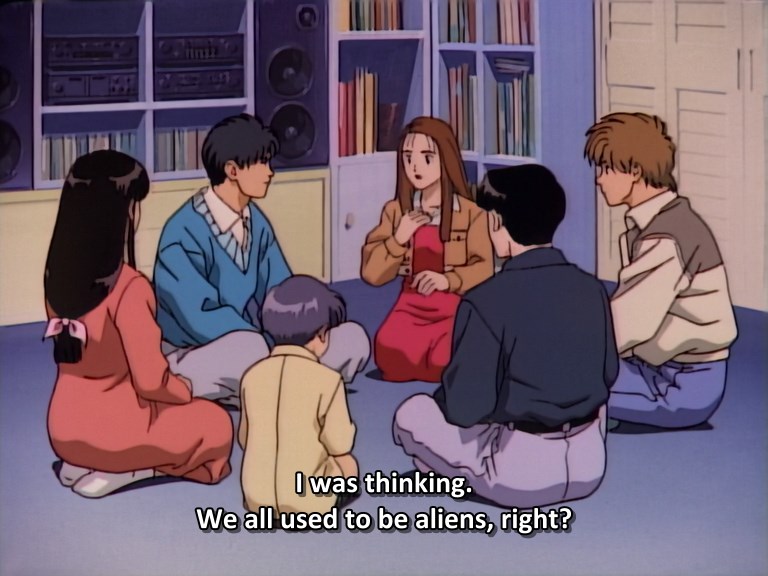
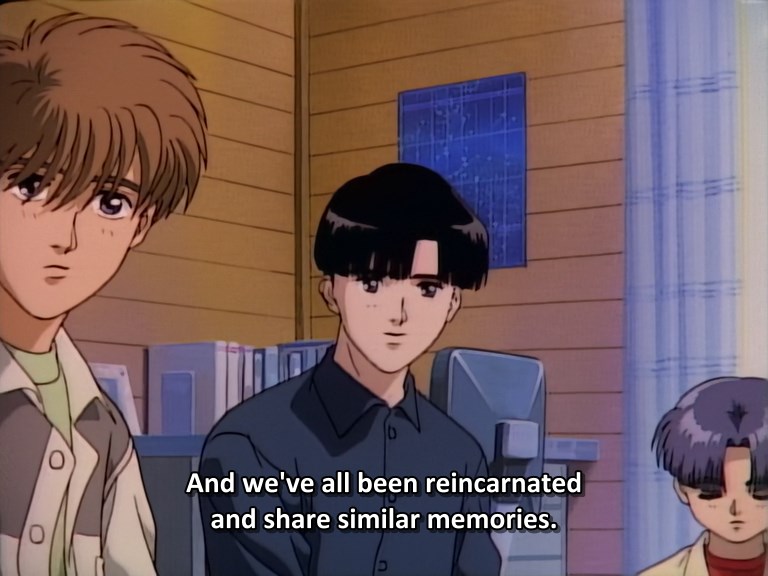
On the moon, these scientists met a tragic end, dying of a viral outbreak amid a series of personal betrayals. The main character, Alice, only experienced a single one of these dreams, and doubts whether or not she is Mokuren’s reincarnation.
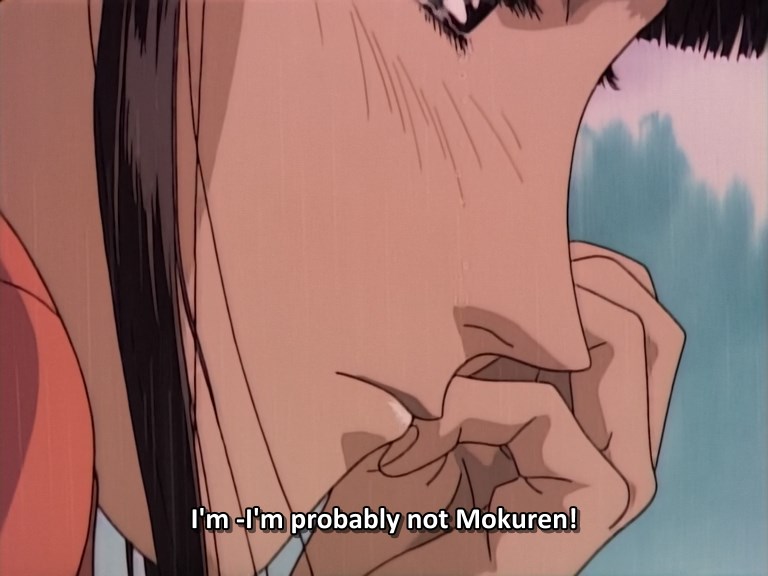 The story revolves around the characters coming to grips with their past selves, carrying out much of their unfinished business. This is especially true of Shion, who was driven mad by nine years in isolation, surviving the others because he received a vaccine, and seeks revenge for his suffering. The cast are not fully human, or at least not mundane humans, having inherited the psychic powers of their past forms.
The story revolves around the characters coming to grips with their past selves, carrying out much of their unfinished business. This is especially true of Shion, who was driven mad by nine years in isolation, surviving the others because he received a vaccine, and seeks revenge for his suffering. The cast are not fully human, or at least not mundane humans, having inherited the psychic powers of their past forms.

On the whole, as much as I enjoyed Konosuba and Tensei Shitara Slime Datta Ken (among many others) I think it's a shame that reincarnation has become standardized in the way it has; there's potential in conflicts with one's past self and fate that isn't being exploited nearly enough these days.